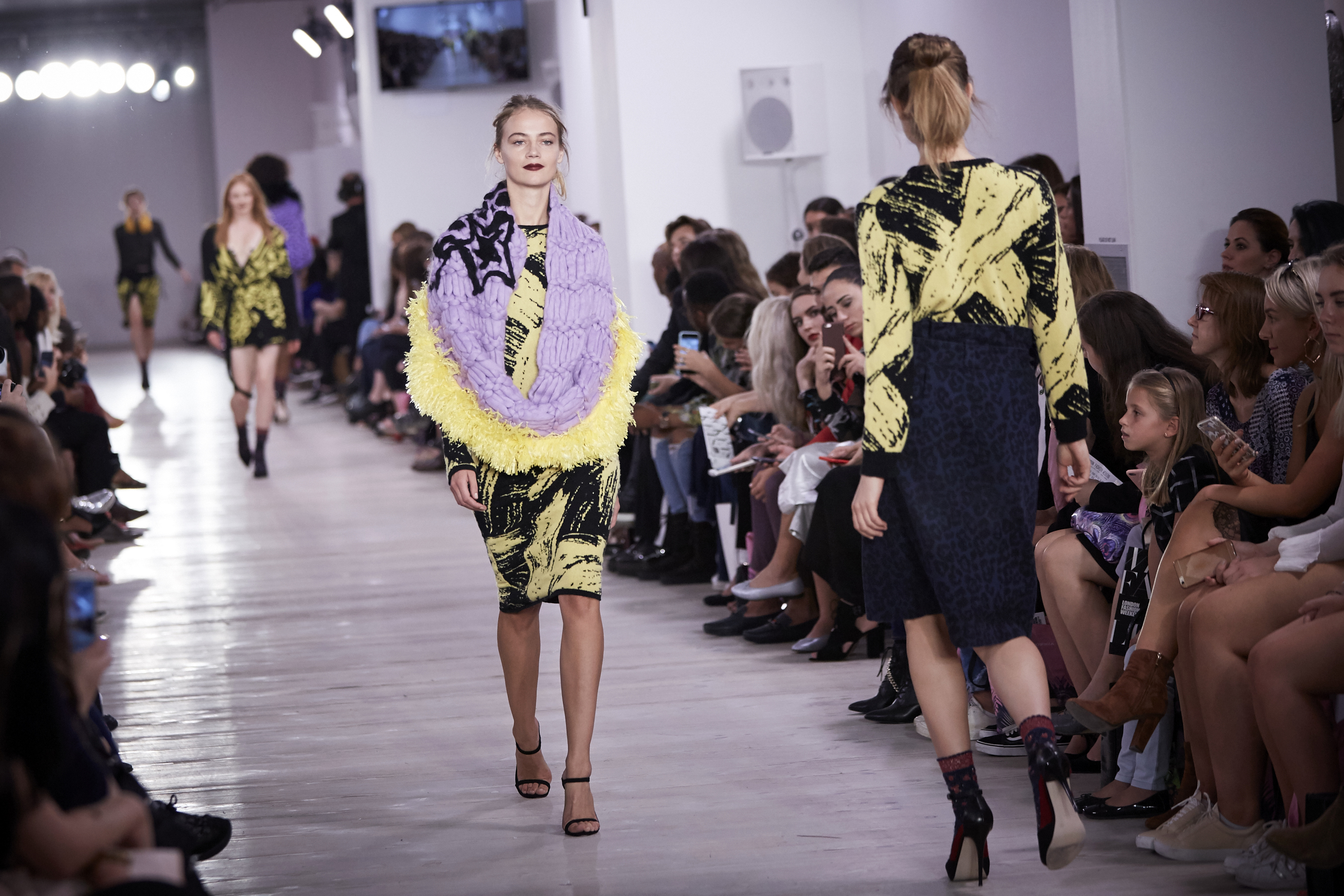As a city renowned for its quirky sense of style, London fashion defines cool and colourful. It seems the vibrant style seen out on the streets in Britain flavours the creations seen at LFW.
Designers that present in London show us sophisticated, yet rebellious collections. In such a sense, ‘showcase’ looks resembling pieces of visual art, as opposed to ‘ready-to-wear’ separates LFW from the differing, commercial fashion most often seen on the catwalks. Perhaps this explains why British designer Victoria Beckham opts to present her collections at NYFW as she prides her brand on ‘reality’ and dressing real women. However, LFW still hosts an abundance of British and international talent, such as Burberry, House of Holland, Christopher Kane and Mulberry to name a few.
This season’s highlights include a flamboyant show from J.W Anderson with complex designs including a neck piece purse. This collection presented mis-matched clashes between fabrics, patterns and shapes, creating what Anderson can only describe as a “style odyssey”.
Christopher Bailey steals the show at Burberry with sculpted curves and shoulder shapes. Taking inspiration from British modernist sculptor through this collection, he again blurs the line between what stands as fashion and what stands as creation of ‘art’ in its own right.
Topshop Unique dedicated its collection to ‘British youth’, represented through bright dresses and casual sportswear in an ode to ‘rave and trance’ and the Hacienda days in Manchester.
Meanwhile A/W 17 saw models of all ages take to the catwalks, with 72-year-old veteran model Jan de Villeneuve, walking for the likes of Simone Rocha and Barzini. Here designers portrayed a message of fashion for all women, and not just the typically young who are usually seen to model the collections. And so whilst it comes as no surprise that LFW embodied power and British culture, it seems Brexit has taken its toll on fashion too.
Alex Jones
Cover Image: http://londonfashionweekfestival.com

